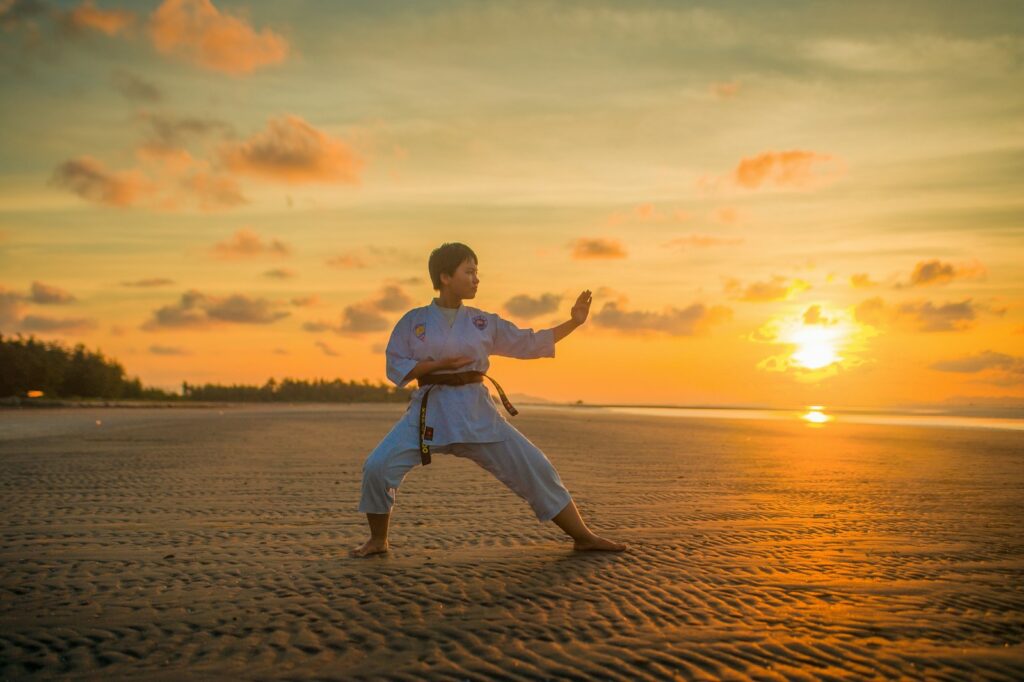Karate, the ancient martial art originating from Okinawa, Japan, is not just about physical techniques and self-defense—it is a deeply spiritual and philosophical practice that encompasses the essence of Japanese culture.
At the heart of Karate lies the practice of Kata, a series of choreographed movements that represent various combat scenarios and embody the principles of martial arts in the Upper West Side. Through the practice of Kata, practitioners delve into a journey of self-discovery, unlocking profound spiritual and philosophical elements that transcend mere physical movements.
Understanding Kata
Kata, which translates to “form” or “pattern,” is a fundamental aspect of traditional Karate training. Each Kata consists of a predetermined sequence of techniques, including punches, kicks, blocks, and strikes, performed in a specific order with precision and focus. While the physical execution of Kata is important, its true significance lies in the deeper meanings and symbolism embedded within the movements.
Connecting with Tradition and Culture
In Karate, Kata serves as a link to the rich history, traditions, and philosophies of the martial arts. Many Kata have been passed down through generations, preserving the wisdom and teachings of past masters. By practicing Kata, students not only honor the lineage of their martial art but also gain insights into Japanese culture, etiquette, and spirituality.
Unlocking Spiritual Growth
The practice of Kata goes beyond physical conditioning—it is a pathway to spiritual growth and self-awareness. Through dedicated practice and meditation, practitioners cultivate a sense of mindfulness, focus, and inner peace. Kata becomes a moving meditation, allowing individuals to quiet the mind, center themselves, and connect with their innermost thoughts and emotions.
Embodying Philosophical Principles
Each movement within Kata carries philosophical significance, representing concepts such as balance, harmony, discipline, and respect. For example, the stance and posture in Kata symbolize stability and rootedness, while transitions between movements reflect the fluidity of life and the importance of adaptability.
By embodying these principles in their practice, Karateka (practitioners of Karate) strive to cultivate not only physical strength but also moral integrity and mental clarity.
The Role of Sensei and Dojo
Central to the practice of Kata is the guidance of a skilled instructor, known as a Sensei, who imparts knowledge, wisdom, and mentorship to their students. In the traditional Karate Dojo (training hall), students learn not only the physical techniques of Kata but also the underlying principles and philosophies of the martial arts. The Dojo becomes a sacred space where practitioners gather to train, learn, and grow together in body, mind, and spirit.
Challenges and Rewards
While the journey of mastering Kata is filled with challenges and obstacles, the rewards are profound and transformative. Through perseverance and dedication, practitioners experience personal growth, self-confidence, and a deeper understanding of themselves and the world around them. The disciplined practice of Kata instills virtues such as patience, humility, and resilience, shaping individuals into better martial artists and better human beings.
Use The Hidden Science Of Sober Martial Arts As An Alternative Method(Opens in a new browser tab)
Conclusion
In the practice of Karate, Kata serves as a gateway to the spiritual and philosophical dimensions of the martial arts. Through the disciplined study of Kata, practitioners embark on a journey of self-discovery, unlocking profound insights into their own nature and the universe. By connecting with tradition, embodying philosophical principles, and embracing the guidance of their Sensei and fellow students, Karateka harness the transformative power of Kata to cultivate physical, mental, and spiritual well-being.
